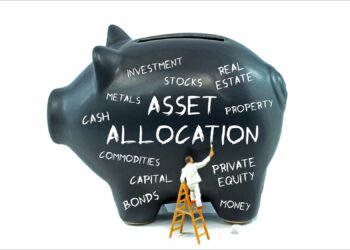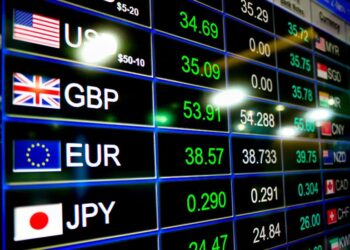The COVID-19 pandemic has almost certainly plunged the international economy into recession as it cuts a swathe through global equity markets. As an equity asset, listed infrastructure hasn’t been immune to the COVID-19 market sell-off. This price volatility could continue for a while yet, until it becomes clearer that health authorities around the world are getting on top of the outbreak and an economic recovery is in hand.
However, it is important to remember that infrastructure is a very long duration asset with a five to 10 plus year investment horizon and earnings that are generally underpinned by contract or regulation. Indeed, once we move past the worst impacts of the virus and the world’s economy returns to a more stable environment, infrastructure, in all its forms, will be integral to the global economic recovery and returning society to a ‘new normal’. There is no global growth recovery without roads, railways, pipelines, power transmission networks, communication infrastructure, ports and airports.
For quality infrastructure assets the sell-off has, we believe, been overdone. Despite the market exodus, the earnings of these assets will prove to be far more resilient than the current equity sell-off implies. To better appreciate the opportunity emerging in the infrastructure asset class, it is important to understand the sector’s key features and prevailing thematics.
ESSENTIAL SERVICES AND USER-PAYS INFRASTRUCTURE
Infrastructure comprises two quite distinct and economically diverse asset subsets: essential services and user pays.
Essential services are the regulated utilities in the power, gas and water space. These assets are largely immune to economic shifts (up or down), as a function of:
- They are a basic need; and
- The structure of their regulatory environment, which measures returns independent of volumes.
These assets are more ‘bond proxy’ in nature, particularly over the shorter term. They are more immediately adversely impacted by rising interest rates/inflation and are slower to realise the benefits of economic growth. At the same time, they are less exposed to economic contraction and benefit from lower interest rates. These assets are an attractive overweight investment in depressed economic environments as they can offer earnings growth and yield support even in weak growth scenarios.
In contrast, user-pay assets are positively correlated to gross domestic product (GDP) growth and wealth creation. Typical user-pay assets are airports, toll roads, rails and ports, where users pay to use the asset.
These stocks capture GDP growth via volumes and often have built-in inflation protection mechanisms through their tariffs. As interest rates/inflation increase over time, this macro correlation leads to earnings upside. This should then be reflected in the relevant stock price and performance. As such, these assets are well-suited to growth environments or buoyant economic climates.
Historically, the earnings of the utilities sector have been largely immune to economic shifts – and indeed we have seen many utilities already reiterating their full year earnings guidance and dividends policies, despite the COVID-19 impact. Fundamentally, they are holding up pretty well, as expected.
By contrast, we can expect user-pays assets to see sharp earnings shifts this year, especially in the airport space.
But even in their case, the valuation impact of a harsh 2020 does not justify the market falls that we have seen to date. Many of these user-pay assets are offering significant fundamental value at these levels.
Infrastructure offers earnings defensiveness with economic and geographic diversity. The structural opportunity is premised on a huge need for infrastructure investment as a result of decades of underspend, and the changing dynamics of the global population. The advent of COVID-19 hasn’t changed this reality.
THEME 1: POPULATION GROWTH, THE EMERGING MIDDLE CLASS AND ENVIRONMENTAL FACTORS
The first driver of the need for infrastructure investment is population growth. In 1900 the global population was about 1.65 billion people, and today it is over seven billion – keeping in mind that some of the infrastructure we are still using today was built to service that 1.65 billion.
By the turn of the next century, the global population is expected to be over 11 billion, underpinning the need for yet more spend. As a society we need to first play catch-up and then invest for future generations.
Importantly, much of this population growth is coming from the emerging world, where demographic trends are very supportive of economic evolution and infrastructure investment. From an individual’s perspective, as personal wealth increases in a country (reflected by a growing middle class) consumption patterns inevitably change.
This starts with a desire for three meals a day, then moves to a demand for basic essential services such as clean water, indoor plumbing, gas for cooking/heating and power (and all this requires infrastructure). With power comes the demand for a fridge or a TV, which increases the need for port capacity and logistics chains (more infrastructure).
Over time this evolution progresses to include services that support efficiency and a better quality of life, such as travel – with a demand for quality roads (on which to drive that new scooter and then car) and airports (to expand horizons).
Importantly, one of the clear and early winners of the emergence of the middle class is infrastructure, which is needed to support the evolution. For example, around 10% of the Chinese population currently holds a passport (and less than 5% in India), yet pre COVID-19, airports globally were reporting record passenger numbers driven by Chinese tourists. At the World Economic Forum in Davos last year, the chief executive of Chinese travel provider Ctrip predicted the number of Chinese passport holders would grow to 240 million by 2020.
This population growth has also raised a number of environmental and climactic challenges that underpin the need for even more spend on infrastructure to ensure the sustainability of the planet. To that end, renewable energy and the energy transition are thematics in which we invest.
From an infrastructure investment perspective, the consequences of this changing demographic are enormous. This includes the domestic demand story within emerging markets by way of utility, communication and transport investments, as well as a growing need for new and expanded international (and domestic) airports, toll roads, port infrastructure and utility services more generally.
When you put all these factors together (developed market replacement spend, population growth largely driven by the emerging markets, and the emergence of the middle class in emerging markets), the need for global infrastructure investment over the coming decades is clear. It is also clear that governments, the traditional providers of infrastructure, are simply not going to be able to fully fund this need – thereby creating a huge investment opportunity for the private sector over the coming years.
THEME 2: THE ‘OTHER SIDE’ OF THE COVID-19 PANDEMIC
While the health crisis continues, increasing focus is turning to what economic life may look like on the ‘other side’. The pace of recovery will crucially depend on policies undertaken during the crisis. If policies ensure workers do not lose their jobs, renters and homeowners are not evicted, companies avoid bankruptcy, and business and trade networks are preserved, the recovery will occur sooner and more smoothly.
What we do know is the economic response to the COVID-19 pandemic from governments and central banks around the world has been massive and continues to grow.
Meanwhile, solid well-managed infrastructure companies are in robust financial positions. Balance sheets were in strong starting positions (in many cases much stronger than prior to the GFC) and few are reporting a liquidity squeeze at present. Companies are in fact communicating robust liquidity positions, including even the hard-hit airport sector, which should sustain them through COVID-19 into 2021 and beyond.
Prudently, some companies have cut dividends in order to further improve available cash, as well as appease social expectations from domestic governments. However, these are not what we would call forced cuts but rather a sensible reaction to a very uncertain environment.
Management teams are also taking the opportunity of open credit markets and low interest rates to secure financing from both financial institutions and the bond markets to ensure ongoing liquidity through the COVID-19 period.
Despite near-term uncertainty around economics and the duration of the pandemic, the underlying fundamentals of these assets remain attractive to debt investors which should go some way to reassuring equity investors. This is particularly true given that, during the GFC, debt markets were generally far better indicators of pending market problems than equity markets.
BUY TIME LOOMING?
The combination of attractive fundamentals, long-term structural thematics, the COVID-19 response and currently very attractive stock prices represents a unique buying opportunity for listed infrastructure.
COVID-19 has clearly caused considerable economic damage and seen equity markets fall. But this has created a fantastic investment opportunity in global listed infrastructure. Once the virus is contained and/or a vaccine developed, the current pandemonium surrounding daily life will ease. While we have not yet reached that point, when we do, the impact of the massive global monetary and fiscal policy response will show, driving up global economic growth.
Global infrastructure will be fundamental to that growth, and asset values will respond accordingly. Studies suggest that for every $1 of infrastructure investment an economy gets a boost of anywhere between $3-$5. That is a significant boost as a result of the infrastructure investment potential.
Sarah Shaw is chief investment officer and global portfolio manager at 4D Infrastructure.





